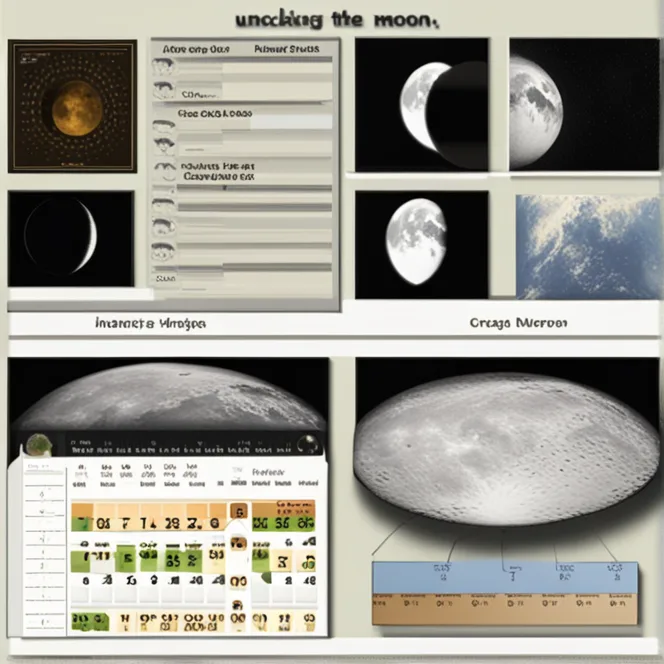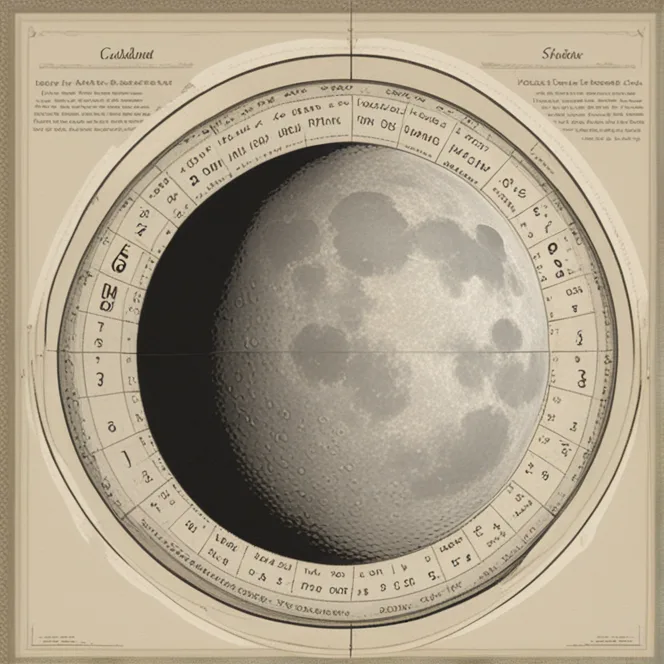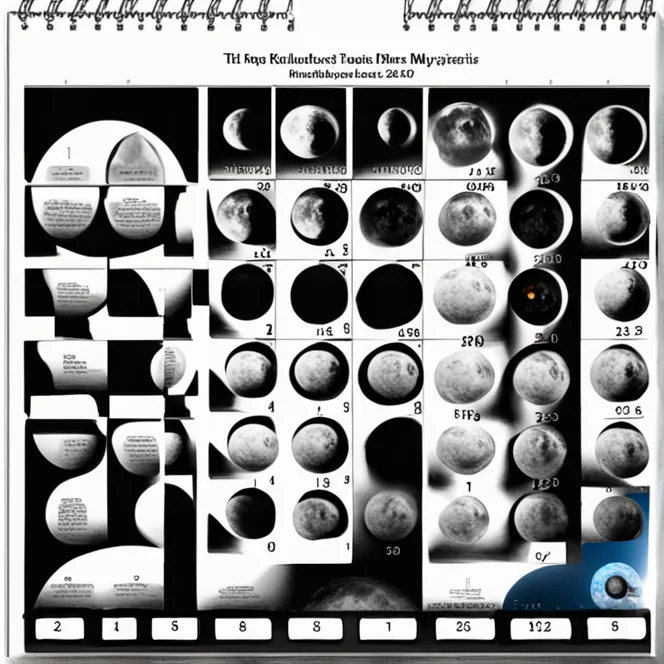
Unlocking Mysteries: Moon Phase Calendar
Explore the lunar cycle and its significance in palmistry, astrology, and beyond with our comprehensive moon phase calendar article.
article by Priya Deshmukh
Introduction to the Lunar Cycle
The Moon, Earth’s only natural satellite, waxes and wanes in a cycle that has fascinated humans for millennia. As we examine the lunar calendar, it is important to understand that the Moon goes through a series of phases, each bringing a unique influence on both the natural world and human affairs. This article delves into the lunar phases, the moon phase calendar, and how they are perceived in various esoteric practices like astrology and palmistry.

The New Moon
The lunar cycle begins with the New Moon, a time often associated with new beginnings and fresh starts. In palmistry, a clear and unobstructed lunar mount—the fleshy pad at the base of the palm near the pinky—might suggest a person who can easily capitalize on the renewing energy of this phase. Astrologers view the New Moon as a moment for setting intentions, making it an essential component of the moon phase calendar.
The Waxing Moon
As the Moon grows in illumination—a phase known as waxing—it symbolizes growth and accumulation. This is an ideal time for building, gathering, and advancing personal projects. In the context of biorhythms, this phase might prompt increased emotional and intellectual progression. Astrologers often encourage individuals to act on the intentions set during the New Moon as the waxing moon provides the momentum needed for success.

Full Moon Illumination
The Full Moon marks the apex of the lunar cycle, with its fully illuminated disc representing completion and realization. Emotions and psychic energy can intensify, and in palmistry, a prominent lunar mount could indicate a heightened sensitivity during this phase. Astrologically, the Full Moon is a time for reflection and harvest, where the fruits of efforts are often revealed, making it a pivotal date in any moon phase calendar.
The Waning Moon
Following the peak of the Full Moon, the Moon begins to wane, decreasing in light and guiding us towards release. This phase is about letting go, purging, and decluttering. Individuals might find it easier to eliminate bad habits, and in astrology, this phase could advise letting go of past grievances or limitations. Such times are valuable for introspection and healing, as the diminished lunar light offers a calmer energy.

Dark Moon Transition
The Dark Moon, sometimes called the Balsamic Moon, is the final phase before the cycle resets. It is a period for rest, recuperation, and preparation. In palmistry, the lines of one’s palm may offer clues to how an individual copes with endings and transitions. Astrologically, the Dark Moon is a time for restorative practices, such as meditation and retreat, allowing for the energy of the next lunar cycle to be greeted with renewed vigor.
How to Use a Moon Phase Calendar
A moon phase calendar is an essential tool for those exploring astrology, palmistry, biorhythms, and compatibility. It helps to track the Moon’s progress through its cycle, allowing practitioners and enthusiasts alike to align their activities with the lunar energies. Keeping a personal moon phase calendar can assist in planning important events, understanding emotional tides, and maximizing potential in every facet of life.
Published: 12/7/2023
Modified: 12/7/2023
More predictions
Come back here soon to learn more about yourself and your future


The Lunar Cycle: A Journey From New Moon To Full
Explore the moon's mystifying phases from the New Moon to the Full Moon and how they influence our lives.


Moon's Mystique: This Weekend's Lunar Phase
Discover the captivating phase of the moon this weekend and explore its significance in the realm of astrology and personal well-being.


The Retrograde Illusion: Unraveling The Moon’s Influence
Explore the celestial phenomenon as we demystify what occurs when the Moon appears to be in retrograde and how it impacts our lives.